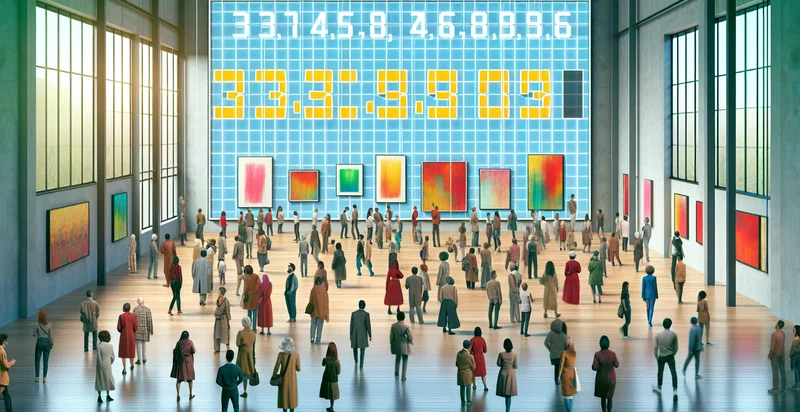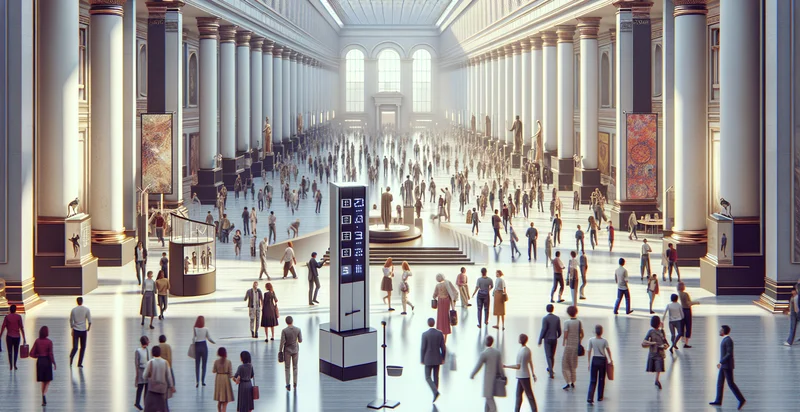Identify gallery viewers count
using AI
Below is a free classifier to identify gallery viewers count. Just upload your image, and our AI will predict the number of viewers in the gallery based on the displayed art. - in just seconds.

Contact us for API access
Or, use Nyckel to build highly-accurate custom classifiers in just minutes. No PhD required.
Get started
import nyckel
credentials = nyckel.Credentials("YOUR_CLIENT_ID", "YOUR_CLIENT_SECRET")
nyckel.invoke("gallery-viewers-count", "your_image_url", credentials)
fetch('https://www.nyckel.com/v1/functions/gallery-viewers-count/invoke', {
method: 'POST',
headers: {
'Authorization': 'Bearer ' + 'YOUR_BEARER_TOKEN',
'Content-Type': 'application/json',
},
body: JSON.stringify(
{"data": "your_image_url"}
)
})
.then(response => response.json())
.then(data => console.log(data));
curl -X POST \
-H "Content-Type: application/json" \
-H "Authorization: Bearer YOUR_BEARER_TOKEN" \
-d '{"data": "your_image_url"}' \
https://www.nyckel.com/v1/functions/gallery-viewers-count/invoke
How this classifier works
To start, upload your image. Our AI tool will then predict the number of viewers in the gallery based on the displayed art..
This pretrained image model uses a Nyckel-created dataset and has 8 labels, including 1-5, 101-200, 11-20, 201-500, 21-50, 500+, 51-100 and 6-10.
We'll also show a confidence score (the higher the number, the more confident the AI model is around the number of viewers in the gallery based on the displayed art.).
Whether you're just curious or building gallery viewers count detection into your application, we hope our classifier proves helpful.
Related Classifiers
Need to identify gallery viewers count at scale?
Get API or Zapier access to this classifier for free. It's perfect for:
- Art Exhibition Attendance Tracking: Galleries and museums can utilize the false image classification function to accurately count the number of viewers who interact with specific pieces of art. By analyzing the images of visitors in real-time, curators can assess which exhibits attract the most attention, aiding in future exhibit planning.
- Event Marketing Optimization: Event organizers can leverage this tool to determine how many attendees were present at various art shows or gallery openings. This data can support more informed marketing strategies, allowing for targeted promotions based on viewer interest and turnout.
- Visitor Engagement Analysis: Galleries can employ this false image classification to analyze visitor engagement with installations and exhibits over time. Understanding viewer interactions helps in refining the curation process and enhancing the overall visitor experience based on popular pieces.
- Real-Time Feedback Loop: Incorporating this technology into interactive installations can provide instant feedback on viewer numbers and engagement levels. Artists and curators can adjust their displays and programs in real-time to optimize viewer satisfaction and engagement.
- Visitor Demographics Study: The tool can help galleries collect data regarding the demographics of their visitors by correlating viewer presence with external data sources. This information can inform targeted outreach and educational programs tailored to specific audience segments.
- Performance Metrics for Artists: Artists can utilize this function to gauge the popularity of their works during exhibitions by receiving detailed analytics on viewer counts. Such insights can help in selecting which pieces to submit for future shows or how to evolve their artistic direction.
- Security and Compliance Monitoring: Galleries can use the visitor count data to ensure compliance with fire codes and safety regulations by monitoring the number of visitors present in real-time. This function can also enhance overall security by identifying unusual attendance patterns or overcrowding.


